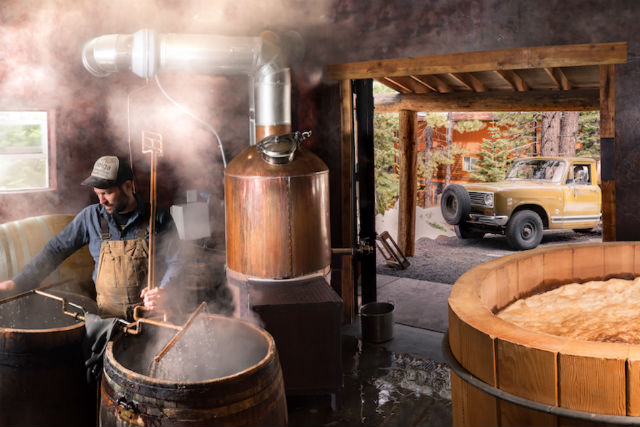
Whether using open fermentation vessels is a small part of a brewery’s business or bigger chunk of sales, most coolship owners agree that it’s always a learning process in brewing and cleaning techniques, maintenance and even marketing and sales.
Across the country, consumers are becoming more educated on wild ales, sour beers and lambic-style brewing traditions, which date back centuries. But this new generation of American craft brewing has started to put its take on old styles and create its own.
It’s nothing new for Dan Carey at New Glarus though. The Wisconsin brewery had been shutting down its production facility from 1994-2014 to brew special wild batches of beer.
That all changed when New Glarus added what it calls its “Wild Fruit Cave” in 2015 and began brewing with a specialty-made coolship with its own home constructed just outside the original brewery.
“By having a separate building we can schedule brewing whenever we want and we purchased additional tanks,” Carey said. “We used to have only two oak tanks. Now we have 20 of them so it allowed us to increase production greatly.
“Learning how to brew such a beer is a long process and takes time to figure out how to do it. We learn every day as as we go. I mean, we’ve been doing this now for 24 years and we’re still learning.”
Paul Arney, who is the founder of The Ale Apothecary in Bend, Oregon said he and his small team look to brew their own version of wild beer.
“It’s a blend of numerous brewing and winemaking techniques,” he explained. The brewery’s main value is to avoid using industrial equipment and processing aids.
“It was a little intense initially, getting our process in place, but I now believe that my instincts regarding the brewing process — and its effect on the final product’s flavor profile — have helped create a house character that is all our own.”
In fact, Arney tells his customers that the process is at least equal to the raw materials in terms of impact.
“Some of this is directly due to how we utilize open wood vats for primary fermentation,” he explained. “One of the most industrialized products in a brewery is the stainless steel that makes up just about every piece of equipment in a modern brewery. My goal was to reduce the stainless steel down to a minimum; our beer takes close to two years to brew, but it only sits in our stainless bottling tanks for a couple of days during that time.” 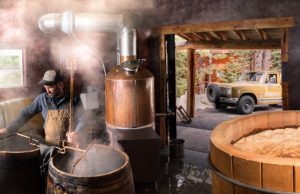
Most of the time, the beer is in close contact with wood: mashing, aging,and fermentation.
The brewery — which produced 350 barrels in 2017 — has a copper kettle and they are developing a coolship for special projects made from the trunk of a giant spruce tree.
“In our process, the open fermentation is where we re-inoculate our wild culture of yeast & bacteria,” he explained. “The beer gets pitched with our harvested wild culture so we can have a quick initial primary fermentation. This keeps off-flavors that typically result in blending batches in lambic breweries down to a minimum as our wild saccharomyces and brettanomyces get to work immediately.
“Additionally, as the fermentation is totally open to the atmosphere, the brew — and subsequently the yeast culture we are maintaining — get inoculated with the microflora present in our biome. These organisms will play a major part in the barrel aging process.”
The brewery utilizes a few 500 liter puncheons with the heads removed for 3-bbl batches. They also have a 4-bbl Douglas Fir tank made by the Hall-Woodford tank company in Pennsylvania.
“They’ve been around for a long time,” Arney said. “We also have an 8-bbl tank being made by Oregon Barrel Works out of McMinnville, Oregon and that is made out of Oregon Oak.”
Chad Yakobson wanted his brewery, Crooked Stave in Denver, to create an environment where from the brewhouse you can walk up to the coolship.
“It is located slightly above our brewhouse and the brewhouse ceiling is lined with Colorado Blue Spruce, our state tree,” he explained. “The height of the coolship is custom designed and allows for proper cooling underneath.
“While making spontaneous beers, there is a science behind the process and we designed our coolship to uphold the science and skill that has been used for centuries.”
A brew day for New Glarus starts in the morning and by the afternoon the coolship is filled.
“Wisconsin is much colder than Belgium … when it’s say 60 degree-ish outside, we have the windows all around the coolship opened so that by the next morning that 210 degree solution is cooled down to, say, below [77 degrees Fahrenheit].”
Normally a coolship is housed under a wood roof or wood ceiling of oak because the microorganisms can take up residency in that porous wood.
“All night long as it slowly cools, it’s like it’s raining in there,” Carey explained. “If you stand in there, you’ll get soaking wet because of the steam from the boiling or hot wort in the cool weather.”
The steam rises, it hits the wood and then it drops back down.
“That’s the first way that you are inoculating the wort with the micro organisms that have taken up residency in the wood,” he said.
Carey said they don’t really check the yeast post fermentation.
“We mainly are monitoring pH,” he said. “Then we let the wort settle, we rack the wort off the sediment and then we’ll just rinse out to coolship. Generally we don’t like to clean the coolship in such a brewery. You want to promote the microorganisms that we’ll be living indigenously in and around the plant.”
Carey has visited lots of breweries around the world and has seen lots of coolships in Europe, which helped lay the plan for the New Glarus facility.
“Our coolship was designed mainly for making sour beer in the lambic tradition,” he said. “So leaving it overnight to cool all the way down to room temperature in the fall weather — or spring weather in our case because we’re in Wisconsin — the depth can be greater.”
New Glarus beers it’s beers for these styles range from 10 gallons on a test batch up to 130 Hectoliters for production.
“So we knew that the depth had to be more or less about a foot and a half deep so that it would slowly cool overnight,” Carey explained, “thus allowing the inoculation of the wort. So I knew that it had to be a little over a foot and a half deep and so it was easy to figure out how big to [have the coolship fabricated] based on our brew length.”
Carey said he doesn’t share too much on his processes with others, but one thing that he does like to divulge on is how to maintain the brewery’s oak foeders
“Probably the most difficult thing about making sour beer is what do you do to make sure that they don’t turn acetic, which is generally not something positive in most sour beer,” he said.
The frustrating, or the unsatisfactory, answer to that is: it depends what you’re going to make.
In New Glarus’ case they have a totally separate building. There’s no doorway between the “Wild Fruit Cave” and the production brewery so employees can’t get from one to the other without going outside.
People that work in the cave will not be allowed back into the main brewery. The lab team does not go into the cave either, so the brewers have to do all of their own lab work. The tools: pumps, hoses, clamps, gaskets are all completely separated and labeled with a certain color tape and stay in that area.
The foeders are anywhere from 250 to 2,500 gallons. In all, New Glarus has about 20 oak tanks along with about 10 stainless steel tanks.
“The stainless steel tanks are there because when we brew we might blend three or four [oak] tanks together to make a batch,” Carey explained. “That means then that those four tanks that we pulled from will have headspace and you don’t want headspace in a beer that’s going to be aging for two or three years because it will turn to vinegar.
“So we might then pump the beer into a stainless steel tank and fill the tank to the top so that we’re not leaving head space for air.”
The oak tanks are generally rinsed with a high-pressure hose.
“We don’t want to leave any yeast or visible material on the wood,” Carey said. “These are old tanks. In many cases 50, 60 years old. So we’re not trying to clean them to be sterile. A lot of the microorganisms are resident in the wood. So by cleaning them with warm water or maybe even hot water — depending on if the tanks are leaking — then we try to fill them right away.
“If we can’t fill them right away, we will gas them with sulfur wicks to keep them in a sulfur atmosphere, because if they’re wet and empty, they can get moldy.”
If a foeder starts to go acetic then they will do a full CIP with the tank using a mild alkaline cleaner and follow up with the neutralisation with citric acid.
“Then we could fill the tank up with a with a sulfur solution at a lower acidic pH and that would also help to fight any acetic acid bacteria,” Carey explained. “Really what you want to do is rinse the tank well and fill it back up or or gas it with sulfur wicks like they do in the wine business.
“It’s more akin to making wine, but we’re trying to promote the the microflora in a positive way.”
Arney noted that they use hot water to pasteurize the equipment.
“One of our core values, as we have to treat all of our wastewater, is to minimize the chemicals that most all breweries dump down the drains,” he said. “It is really the truest reason as to why our beer is sour; values such as these have shaped the way our brewery looks and how the beer tastes … we don’t start out to force our beer into a style, we use our brewing knowledge to make the best beer we can while upholding our values.
“This leads us into some interesting places.”
He does harvest yeast by scooping the yeast off the top of an ongoing ferment.
“We store it in the fridge until the following week when we use it to pitch,” he said. “We’ve banked our wild sacch strains at Imperial Yeast and a few times a year we have them grow some up so we can blend it back in to our serially re-pitched stuff at less than half total volume.”
Yakobson said over the years, the more Crooked Stave has used their coolship, they have seen their house culture grow stronger and active fermentations have been produced.
“Because the beer is spontaneous and we have been brewing utilizing the same practices for three or more years it’s really about the amount that we use it and allow the native microflora to continue to grow and thrive in our environment,” he said.
As the popularity among consumers of the entire “Sour Beer” genre has grown, Carey believes that its a double-edged sword for longtime producers.
“People are more understanding or have a better understanding of what we mean by a sour beer,” he said “But equal to that, there’s been an increase in the amount of [breweries] making sour beers. There’s been more of an influx of Belgian beers, there’s many many more. Every craft brewery seems to be making sour beers of one sort or another, so the competition has increased. Although the market is larger, there is a lot more beers to choose from. And it’s also, frankly, a small market. Most people don’t go out and have two or three pints of a sour beer. So the market is not huge.”
Ale Apothecary photo courtesy Tyler Rowe

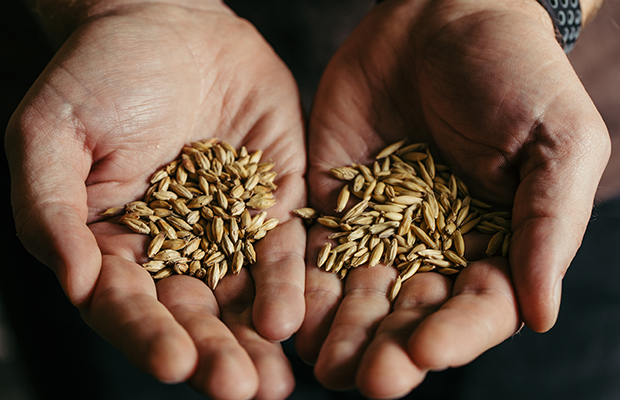
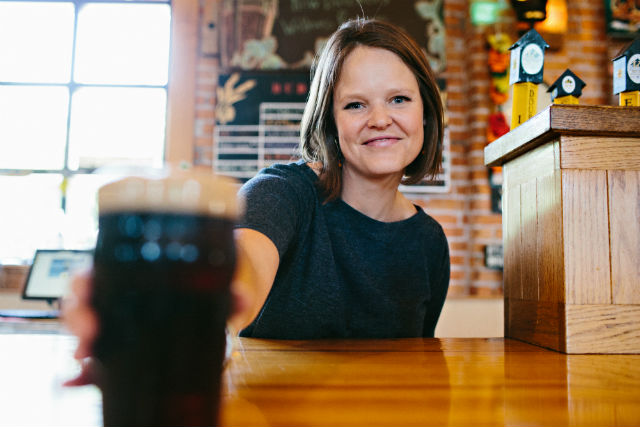
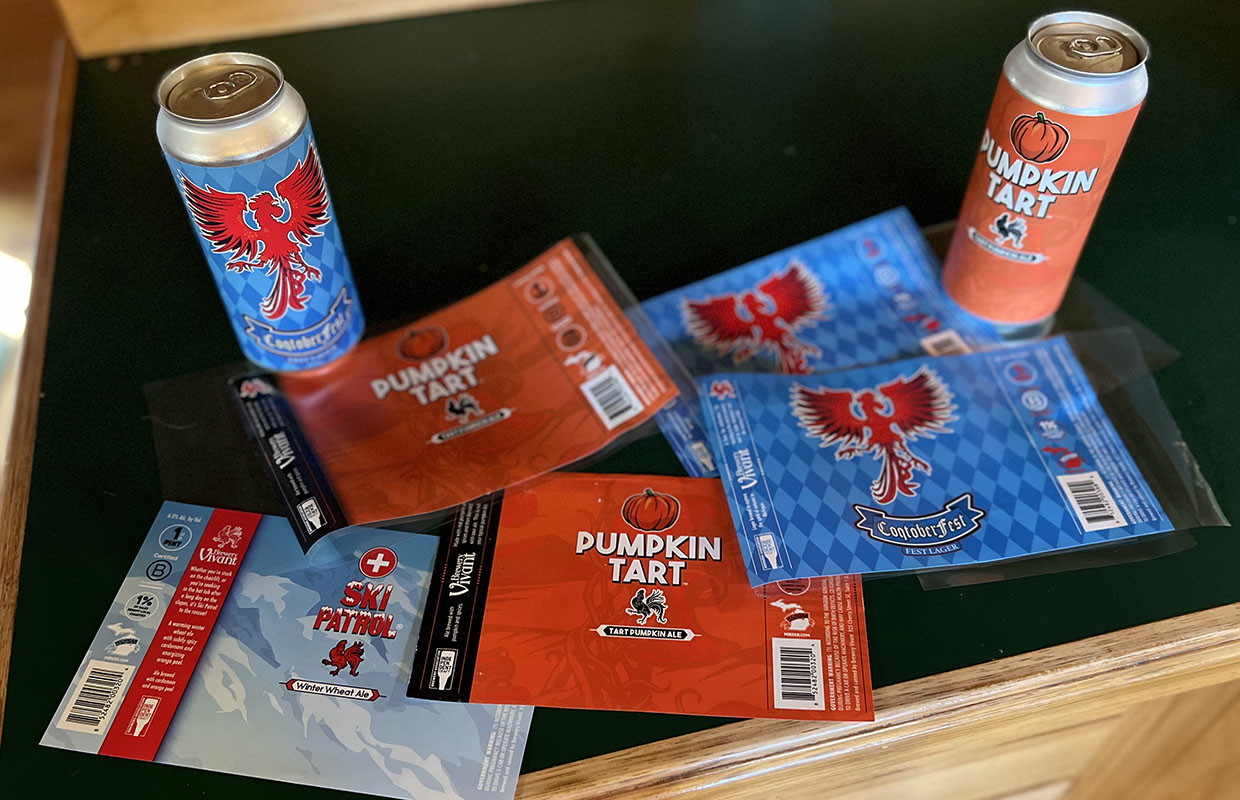
2 Trackbacks / Pingbacks